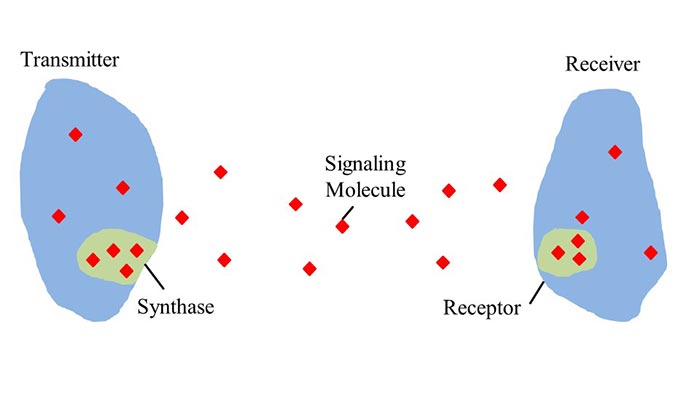Molecular communication a new nanotechnology health frontier
Imagine swallowing a pill that, as it dissolves, releases microscopic nanomachines programmed to go to a specific location in your body and collect information at the cellular level for a medical diagnosis.
This marriage of medical technology and nanotechnology is already on researchers’ drawing boards around the world. At the University of Melbourne, new postdoctoral research fellow Dr Yuting Fang is investigating one particular aspect of this frontier science: molecular communication.

Dr Yuting Fang
Critical to the diagnostic process will be the ability of the nanomachines to communicate with each other, to arrive at a measured consensus about the cellular information they find, and to communicate this to a physician.
Dr Fang moved to Melbourne in 2020 to pursue her research, winning one of three Doreen Thomas Fellowships awarded this year by Melbourne School of Engineering (MSE).
The fellowships are designed to support diversity, attracting or retaining outstanding female doctoral graduates and providing a pathway to a teaching and research career at the University of Melbourne. They are named after Professor Emeritus Doreen Thomas, a leading academic whose work has spanned the fields of mathematics and electrical and mechanical engineering. In 2006 she was the University of Melbourne’s first female professor in engineering.
It is at an intersection of engineering, communication technologies, biology, biochemistry, biotechnology, nanotechnology and microfluidics. All of these specialisations will need to contribute to molecular communication
For Dr Fang, the fellowship provides the opportunity to move to Melbourne after completing her PhD at the Australian National University in Canberra. She studied her undergraduate and masters degrees in electrical, electronics and communications engineering in China, at Beijing University of Posts and Telecommunications, and Tianjin University respectively.
Dr Fang says the MSE fellowship encourages interdisciplinary collaboration, which is essential to her research.
“It is at an intersection of engineering, communication technologies, biology, biochemistry, biotechnology, nanotechnology and microfluidics.
“All of these specialisations will need to contribute to molecular communication, so I have found the perfect environment in which to progress the research I started at ANU.
“There are people here in the Department of Electrical and Electronic Engineering, like my supervisor and deputy dean, Professor Jamie Evans, who have existing knowledge of this field. I already have a lot of support and understanding of what I am seeking to achieve,” she says.

An illustration of molecular communication
To explain the science, Dr Fang says that where conventional wireless communications use electromagnetic waves, molecular communication would use molecules to transmit binary information.
“A set number of molecules could represent 1, and no molecules (a break in the transmission) would represent 0.
“If you can visualise how molecules of alcohol vapour can move in the air between two points representing a ‘transmitter’ and a ‘receiver’, you can understand the concept. But to be functional, molecular communication will need to be spatially constrained for reliable information transmission.”
It is an exciting field, and the more people working in it, the stronger the long-term outcomes
While conventional electronic communications can cover large distances, molecular communications would work at the nanoscale of no more than a few nanometres (billionth of a metre). Communication between nanomachines reporting on cell health is an example application.
Dr Fang says the primary goal for her three-year fellowship is to build a testbed for nanoscale molecular communication and to establish strong collaborations with nanoparticle and microfluidic specialists within the Melbourne School of Engineering.
Because molecular communications is a new field, Dr Fang says it needs to involve more people. Another of her fellowship goals is to promote this field of science and attract more researchers to it. “It is an exciting field, and the more people working in it, the stronger the long-term outcomes.”